Monday, May 12
We woke at 8:00 a.m. and prepared for the day, which seemed like the sun would be mostly out. Breakfast in the dining room was much the same as it had been the morning before. Then back to our room for an hour before leaving for our first venture out. Today we were getting two wine tours with tastings of Sauternes. (By the way, Sauternes, with an “s” at the end, is both singular and plural.) We also made reservations at a nice restaurant for lunch, and booked dinner with Benoit that evening at the B&B, since very little is open on Monday nights.
We arrived at our first wine tour and tasting at Chateau d’Arche, located in the heart of the Sauternes area. In 1611, Etienne d’Arche, the oldest son of Bernard d’Arche, the Knight and Lord of Arche, decided to settle in the area and bought an old farm. It took a while to build the chateau and to decide what to do with the land. But finally, in 1855, the descendants began to grow grapes and produce wine, and it has been selling ever since. In 1925, Armand Bastit-Saint-Martin, the mayor of the village of Sauternes, succeeded his father-in-law as the head of the Chateau, and undertook the process of reunifying the estate and expanding production.
The secret of why Sauternes wines do so well in this area is the terrain, or terroir. The warm air flowing off the Garone River meets with the cool air off the Ciron River, which creates a microclimate. A morning fog appears and drifts over the rolling hills and valleys, and clears with the warm afternoon sun, providing the optimal amount of humidity and warmth for growing grapes for winemaking.
Chateau d’Arche can produce a maximum of 3,333 bottles per hectare of Sauternes wines, which is one of the lowest yields in the world. They produce an average of 2000 bottles per hectare. (A hectare is equal to about 2.471 acres, or 5 hectares is about 12.355 acres.) This adds up to only one to three glasses of wine per vine stock, depending upon the year.
For our tasting, we chose the Four Senses Tour for $50 each. First, there was our private tour of the property with our guide, a young woman named Aline. She began by taking us first to the front of the chateau home, just inside the front entry gate, where she told us about the history of the owners and the property. A lovely green lawn with blooming flowers was encircled by a curved gravel road. The front walls of chateau’s long building were covered in green ivy. White shutters surrounded white window frames, a reddish-brown tile covered the roof, and a square tower was at each end. A grand double curved stone stairway led up to a landing at the front door.
Then we turned around and stood at the top of the hill, looking down the western side of the gentle slope where vines stretched out before us, and beyond was the small village of Sauternes. Aline talked about the terroir, how the soil is prepared, how the stocks are grown, why they do well there, and how the grapes are picked. The weather always dictates the picking of the grapes in the season, and they have adjusted the timing of the harvest over the years. Now, instead of one picking in the Fall, the same vine might be revisited two to three times in order to pick the grapes at the right time, for the perfect taste from each vine.
They have a double certification for their vineyard of ISO 14001 and HVE 3, which means that they have for the past ten years approached the production with biodiversity and very high environmental standards. Even ploughing by horseback was reintroduced to ten hectares, so that gas-run machines do not spew chemicals. The new building, clad in acacia, houses the cellar where the wine is stored, and has a grass roof. The vineyards are comprised of seventy hectares for Sauternes wines and thirty hectares for Bordeaux wines. Ninety percent of the grapes grown are Semillon, blended with ten percent gray and white Sauvignon and Muscadelle grapes. They sell four types of sweet Sauternes, one dry white, one dry red, and one sparkling wine.
The tour was extensive, from the cellar room full of stainless vats to the barrel room full of oak barrels. Since there would be so many bottles needing to be filled, Vere asked about the bottling. Aline said that a truck comes to the winery when the bottling is ready to occur. Long flexible tubes flow from the readied vats to the truck, where the bottles onboard are automatically filled. Then the bottles are brought in, and run through a machine to place the labels on each bottle; all except for their best bottles, which have their labels put on by hand. Then the truck moves on to another winery to do the same process.
Next we were taken to the tasting room. Aline presented each of us with a small wooden tray that held four white ceramic spoons with food samples to go with the four different sweet Sauternes that we were to taste. She began with the youngest Sauternes, a 2017, which was the lightest in color, and because it had not been held in a barrel for very long, was the sweetest. With it they offered a spoon of terrine of white fish, which went with the slight floral and citrus notes of the wine. The second tasting was the 2008 Sauternes, and they offered a spoon of a curried squash with walnuts, demonstrating that the slightly sweeter and more robust Sauternes would work even with a stronger flavor of curry. Then it was a 1999 Sauternes with a dry Tomme cheese that had been cured with a walnut rind. The last tasting was a 2000 Sauternes, that they referred to as their Creme de la Tête, which literally translates to “cream of the head,” meaning their best. It was produced from the first picking of the botrytis cinerea or the noble rot grape, and served with a slice of dried orange rind dipped in dark chocolate. To say which was the best is like a parent saying they like one child more than another. They were each wonderful, becoming a little less sweet, but fuller and richer as they progressed. We ended up buying bottles of the 2017 and the 2000. We also needed a wine opener so we could enjoy it later, but one was gifted to us.
Vere wanted to drive into the village of Sauternes, so we drove down the hill and as we were slowly passing the church, the bell began to toll. Vere took a video in front of the building, while the bell continued to sound. The bell rang the hour of noon, calling people to prayer. The front door was wide open, but no one was there to enter. In a poll conducted only five years ago, it indicated that people identifying as Catholic had declined from 81% in 1986, to only 47% in 2020; and as many as 40% of French citizens had declared themselves unaffiliated with any religion.
Then it was time for lunch. We ended up twenty-minutes away in the town of Langon, at Le Grangousier Bistro.
It was only noon, but after having had wine, we were hungry. For appetizers, Vere was served two small blocks of foie gras, one sliced with some red pepper on it, and one with sliced strawberries and a bit of syrup. I had baby white asparagus that had been marinated in a vinaigrette and topped with bread crumbs. The description said that parmesan was included, but was missing. Then for the main courses, Vere had the demi magret (half a duck breast), served with a dark cherry sauce that had some red wine added to it. I had the chicken breast with a citron cream. We both had the au gratin potatoes, and then Vere had the strawberry and rhubarb tart. I was too full for dessert. Aside from the asparagus lacking finesse, everything else was delicious.
It was time to head to Chateau d’Yquem for our tour and wine tasting. We drove down a very long white gravel drive that led straight to the chateau. The impressively long building had several square and round towers with gray pointed cone roofs, which added an element of fairytale appearance. The white building struck a beautiful contrast to the dark green of the vineyards laid in perfect rows that ran all along each side of the road, with a bright blue sky and puffy white clouds above.
We were about fifteen minutes early for our appointment, but were offered a tour in English right away by a woman named Anna. She guided us out the front door and around to the right side, down a shaded arbor and out through a wing of a back building to stand outside on a bluff to view the vineyards. She showed us several large nearby trees that overlooked the impressive expanse; one of which the soldiers during WWI had planted when the chateau was used as a military hospital. Then we walked down some steps directly to the edge of the vineyard. Anna waved to a smiling woman who was working in the rows, and we walked over to her. The mature woman, wearing a working apron, showed us how she was cutting off the secondary growths from the main root stock so that the main branches would grow sturdier, and then she would help twine them around the wires that were strung above. We noticed wildflowers growing between the rows, and she said they helped to add nitrogen to the soil to make it richer.
Then we returned to the building through a side door, where we entered a large room to see hundreds of barrels lying on their sides on stands, piled up to either side of us. Some had glass stoppers out of the barrels and lying on top. These were waiting to be filled. She further led us into a display room where two large wooden models were affixed to the floor, showing the land around the chateau and the surrounding countryside. She held a tablet that changed the lights with each one, showing how the timeline of the chateau had developed and increased in size, and how the fog drifts in producing the special terroir of the area for wine growing.
Anna led us down some spiral stairs where orange light globes hung through the center of the two-story stairway, reminiscent of the yellow-orange color of the noble rot that forms on the grapes. At the bottom of the stairs, we viewed through heavy glass doors, hundreds of barrels across a vast floor, piled up on the left and on the right, and the name of Chateau d’Yquem facing us in gold letters upon the far wall. Then it was back up the stairs, and she pointed out that the barrels from 2022 were getting tasted to see which would be blended. The 2023 wines would be available by March of 2026, the bare minimum time from picking to bottling. Like the Chateaux d’Arche winery, the wines were all placed into white oak barrels until ready to be bottled.
We left the building once again, and she led us through the garden, where roses were in full bloom, pointing out to us a yellow rose that was actually called the Sauternes Rose. Then in through a side door to a small cushy lounge where we sat for our Sauternes tasting. She asked if we would like some background music, and we were shocked to see a turntable with vinyl records stacked up, the front covers showing Dark Side of the Moon and Queen. We could only surmise that listening to such progressive rock with its thematic integrations like heartbeats and cash registers would help promote tasting and purchasing one of the most expensive wines in the world. Diplomatically, having long ago left behind the likes of listening to the psychedelic use of synthesizers, we said that we would prefer to just hear her lovely voice. She left the room for a short time and then brought in a 2016 bottle of Chateau d’Yquem. She gave us a generous pour of half a glass each, and as we sat, twirling the amber liquid and inhaling its fragrant bouquet, we chatted. She talked about some of the oldest wines that were housed at the chateau and other aspects of growing and tasting wine.
When we had finished savoring the deep rich, pale gold colored liquid, which starts at about $500 a bottle online, Anna led us to the show room, where they were hoping for us to purchase. There, we could see the different size of bottles that they sell. They didn’t have all the sizes that were offered, but here is a rundown on the sizes. Beyond the 1-liter size bottle, there is the Magnum that holds 1.5 liters, the Double Magnum (also the Jeroboam for champagne) that hold 3 liters, the Rehoboam that holds 4.5 liters, the Methuselah or Imperial that holds 6 liters, the Salmanazar that hold 9 liters, the Balthazar that holds 12 liters, the Nebuchadnezzar that holds 15 liters, the Melchior that holds 18 liters, the Solomon that holds 20 liters, the Sovereign that hold 22.5 liters, the Primat (Goliath) that holds 27 liters, and the Melchizedek that holds 30 liters.
We wanted to be able to say that we bought a bottle, but the cheapest bottle was 500 euros! We had probably sipped about 200 euros worth in our tasting. We left, still feeling we had had an excellent taste and tour.
Now fully sated, we got back in the car and commented about the contrast of the two Sauternes wineries and what each offered. The Chateaux D’Arche was of the second grand cru level, but they offered four tastings and showed how each could be enjoyed with different foods. They were also a much more reasonable tasting price. While the Chateau d’Yquem wines were of the premier grand cru, at the top of the pyramid, and the one we tasted was amazing all on its own, the prices were extremely high. Perhaps for the connoisseur who knows the best from the best, and can afford them, the latter makes them want the best, but for us, the first winery was better and more enjoyable.
Afterward, it was back to Chateau Camperos and our room, where we digested the large lunch and let the Sauternes settle. For in just a couple hours, we were due downstairs for dinner. Beforehand, Vere decided to take a walk around the property to take pictures, following a path and listening to nearby trains go by.
We ended up being the only people eating at the chateau that night, so it was a private dinner catered just for us. The first thing our host offered was a glass of Sauternes, of course. Although our sensible heads wanted to say no, we said yes, and slowly sipped it throughout our dinner. The appetizer was a chilled pea gazpacho soup with a small ball of buffalo mozzarella. There was a sprinkling of baby peanuts and sunflower seeds and a drizzle of balsamic. For our main courses, Vere had the canard (again), but this time the meat was shredded. The side dishes were what seemed like a mashed haricot blanc (white bean) with seasonings and white rice. The bread was very fresh and warm. I had a white fish with butter and lemon sauce. The sauce especially was delicious. For dessert we had one each of the offerings. One was panna cotta with puree of kiwi and kiwi slices over it, and the second was Canéle, a small French pastry flavored with rum and vanilla, having a soft custard-like center, which stands up as a striated cylinder. To the side was added caramel and vanilla ice cream and Chantilly cream. We found out that our host was the chef, and he had done an admirable job.
We were still so full from lunch that we held back completing the entire dish. We did eat our duck and fish, but only tasted the soft-whipped beans, and didn’t touch the rice. But, of course, we ate all of our dessert! Vere had to finish my Sauternes. I just couldn’t take in one more sip.
Then back to our room, where we caught up in the diary and responded to a few emails.
Tuesday, May 13
At breakfast, only one table was set, as all the other guests had departed the afternoon before. Benoit brought us our usual eggs and yogurt. We enjoyed a leisurely meal watching the morning light turn a little gray, as rain was forecast for within the hour, so we waited a bit before heading out. Then the weather cleared, so we left for our first venture of the day to see old and ruined things.
On the way to a ruined abbey, we began to pass an old broken-down train. Vere opted to stop so he could take some pictures of it. The train had last pulled into the old train station in 1875. There it remained and the station eventually turned into a restaurant. The train was funny to look at, as black and white pictures of people looking out the train had been affixed to inside the windows, to make it look like the train was full of people. It was cleverly done. On the side of the road we saw this local sign, letting motorists know to watch for sheep, as a sheepherder is nearby.
Our destined stop was the ruined Sauve-Majeure Abbey, (sauve – meaning woods or forest – thus, an abbey in what were once woods, now surrounded by a town). It was only open during the day for a limited time, from 10:30 a.m. to 1:00 p.m.
This was a former monastery of the Order of Saint Benedict in the commune of La Sauve. It was founded in 1079 by the Duke of Aquitaine and Gerard de Corbie, a Benedictine Abbot, who was buried there in 1095. During the Middle Ages the abbey grew rich and powerful, housing up to 300 monks. It also served as one of the regional starting points for pilgrimage on the road to Compostela. After a heavy storm in 1665 which damaged the roofs, the bell tower collapsed, and later an earthquake destroyed more buildings. After the revolution, what remained of its wealth was confiscated, the building used as a prison, and then a fire destroyed much more. The abbey fell out of use and into ruins by the 18th century. In 1914, some of the outer buildings were converted into a small military hospital. It became a historic monument in the early 1900s, and finally came under the protection of UNESCO in 1998.
At the entrance we were given a laminated booklet that explained all the remaining stone carvings. The town was lucky, as at one time the king wanted to completely bring down the rest of the abbey, but the cost to do so seemed too high, so it was left. Wide green grassy areas covered what had been the grounds, cloister, and many ground floor rooms. Large colorful alphabet tiles marked where explanations in our booklet could be read. Capitals on top of many the columns were still decorated with scenes from the bible: mermaids, Samson, dragons, King Herod and Sheeba, and many others, as well as leaf and flower designs.
Vere decided to climb the tower, and when he got to the top, he took one picture that looked down inside a round tower, but when he came down, he couldn’t find where that round room was. It really had him going until he realized that he had looked down on an internal room not visible from the outside.
Toward the end of our exploring, we were able to see where the old Chapter Room was, called that because it was where one chapter of the Bible was read every day. Then we walked through the small museum where many things uncovered from excavations had been found.
Afterward, we drove down the street, parked around the back of the church property, and found a boulangerie for something to eat. Vere got a ham and cheese sandwich and I got a tomato pesto sesame bun, and we shared something sweet. We took our time as our next stop at a ruined castle did not open until 1:30.
Rauzan Castle was built between 1310 and 1350. A rebuilt drawbridge allowed access. One enters through a Gothic doorway with a very nice palm tree decoration over the Gothic arch. We were able to explore a defensive tower with four floors and two vaulted areas. Large casement windows showed that they had been added to the building later. In one room a large fireplace remained, and above was a walkway between the watchtowers.
Vere slowly climbed the tight spiral staircase. When he came around a midway curve, the bright sun shone through an arrow slit in the shape of a cross, in a dazzling array. It actually stopped him in his tracks as it was so brilliant. If he had been a Christian, it would surely have been a holy sign. But he continued up to the top of the tower. When he got to the top, he saw a plane cross the sky and leave a vapor trail, but it had also crossed another short vapor trail from a previous plane; and once again, it was exactly the same proportion as the cross of light that he had just seen. Was it a sign after all? He immediately let the coincidence pass and began taking photographs; but he would remember those moments of surprise.
When he returned down to the ground, we met up, and took turns taking pictures of each other with our heads through headless boards with painted medieval dress. Then we visited a room that led to the dungeon, and another that had been the bakery, and finally the privy. There wasn’t much to see, but the surrounding stone walls still presented a fine medieval fortified and historic castle that once belonged to the crown of England and the son of Eleanor of Aquitaine.
From there, we decided to find the Curton Dolmen, not too far away off a country road. We followed the GPS map on Vere’s phone where the streets became smaller and narrower and turned to gravel, and stopped when it turned to dirt. We then parked and began to walk a trail, muddy from recent rains. The path slowly wound its way upward to a flat open area where a local farmer had planted rows of grape vines.
In the center of the field, on a rocky mound, the dolmen rested between several large trees. One large knobby stone rested across two side stones, and the head stone slanted outward. The bones of five men and three women had been found there with burial goods. We finally located the headstone markings, with what looked like horseshoe shapes, facing up and down, and to the side, indented rays fingered outward.
We rested and then hiked back, seeing butterflies along the way, through dappled light of trees alongside the old farmers road.
On the way back, Vere tried several times to find a store to get some soda, but each was closed. Finally, we ended up getting gas, and at a nearby market we bought some drinks, before coming back to Chateau Camperos.
At 6:45 we went out to dinner in Cadillac-sur-Garonne, a nearby riverport town, and the namesake of the Cadillac automobile brand. The eatery was called La Cave Restaurant. We were the first customers in and the host sat us near the back. Vere had a glass of sweet wine from the local Cadillac area. Then he had the foie gros de la cave with sweet sautéed onions appetizer. Afterward, he had the Poêlée de Saint-Jacques (scallops with the orange foot still attached) in a light cream sauce. I had the chêvre chaud (hot goat cheese), which was served in a long wooden bowl with walnuts and three generous mounds of goat cheese with honey toasts, all on top of a large mound of dressed salad.
On the way out, while waiting for the woman at the bar to take our money for dinner, we looked through the small shop with local wines, jars of pâté, other specialty and sweet delights. We bought a small bag of caramel fudge. Then it was back to our chateau, where I completed the diary for the day, and Vere booked our tickets for the next day to enter an underground church with a catacomb.

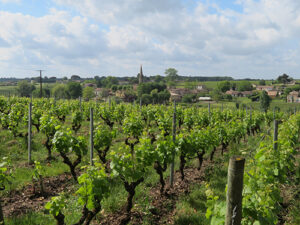

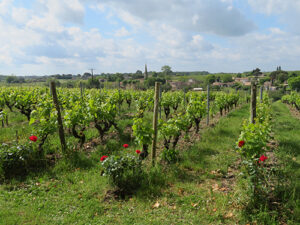
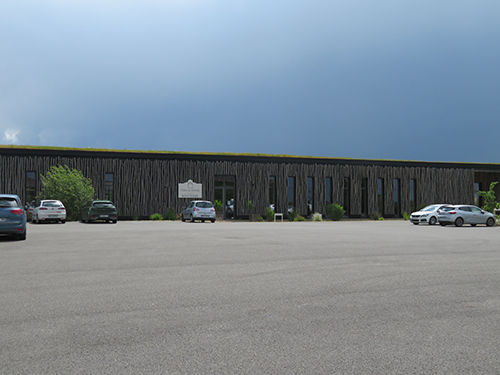
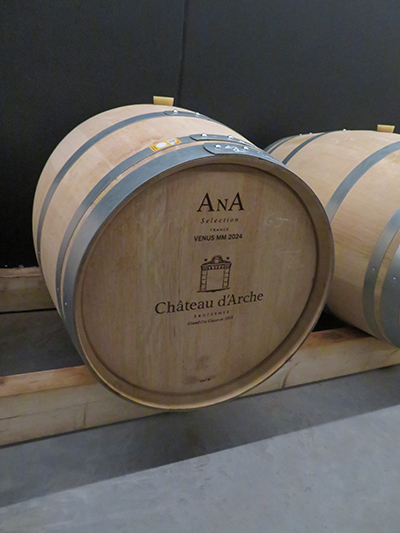
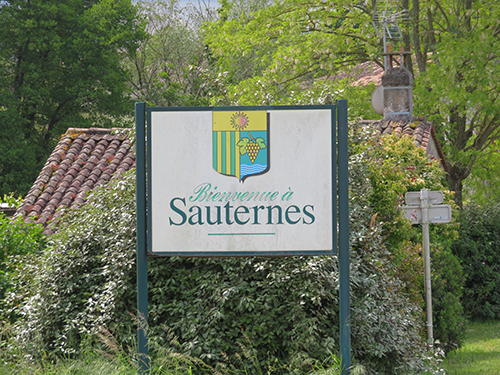


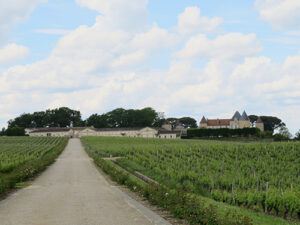
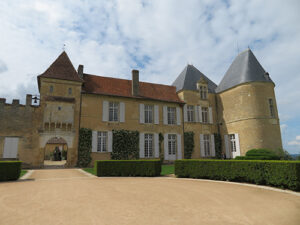
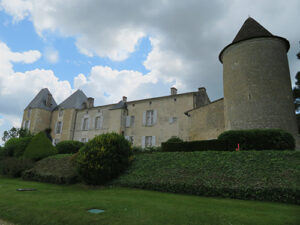


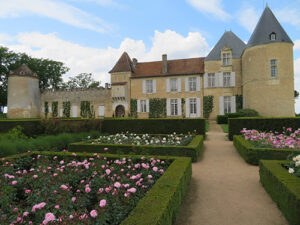

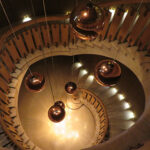
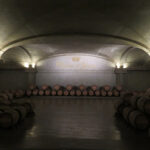

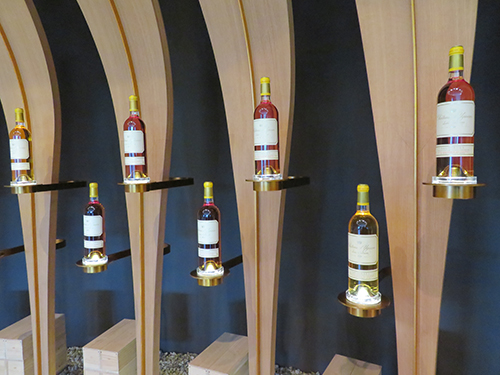
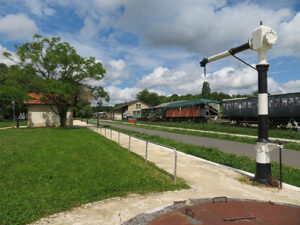
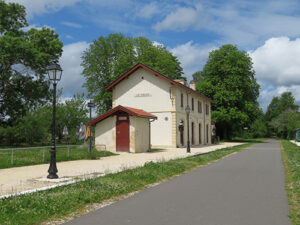
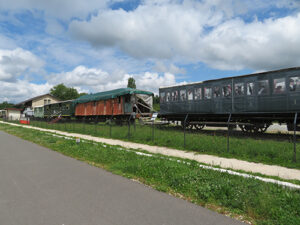
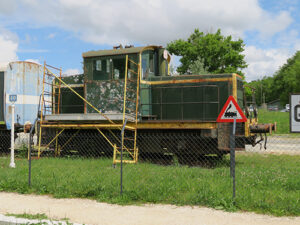
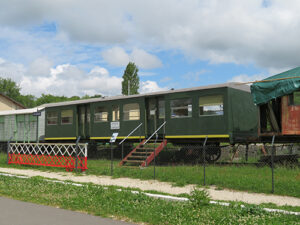
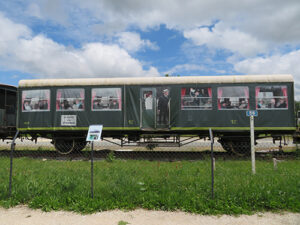
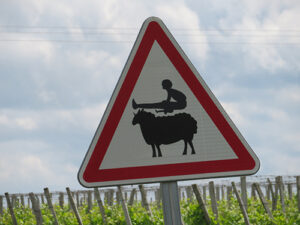

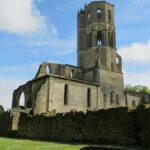
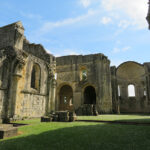
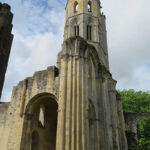
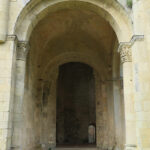

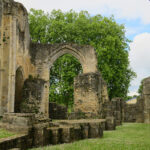
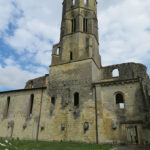


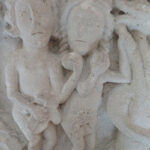
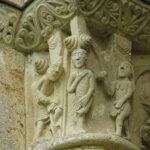


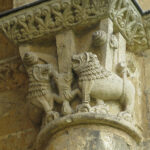

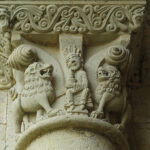
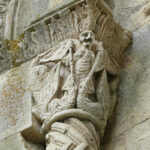
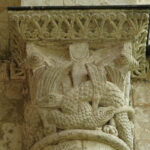
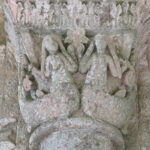
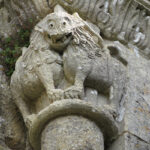

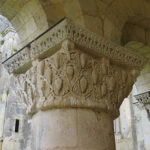
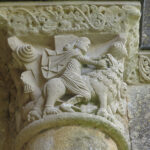
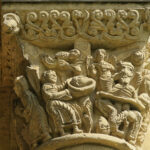



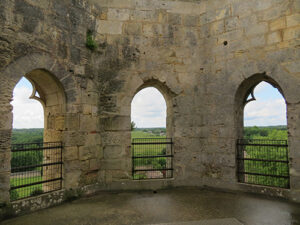
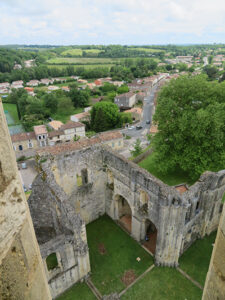


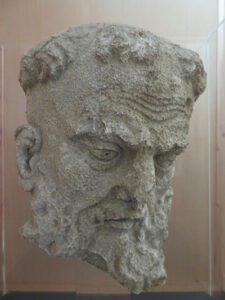


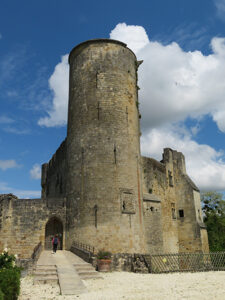

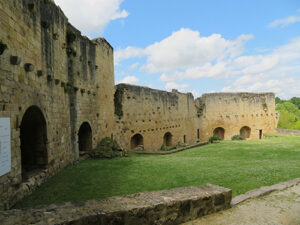
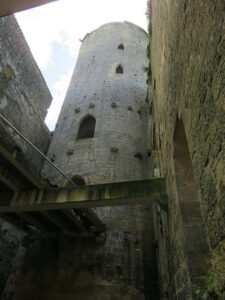

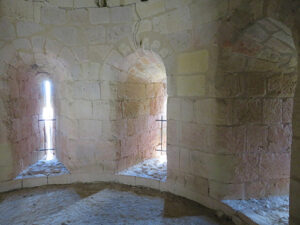
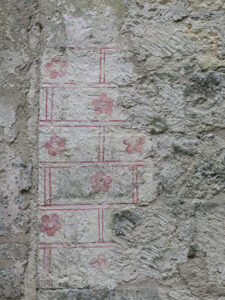

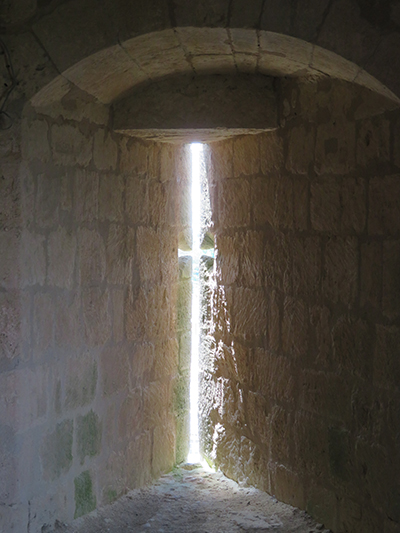
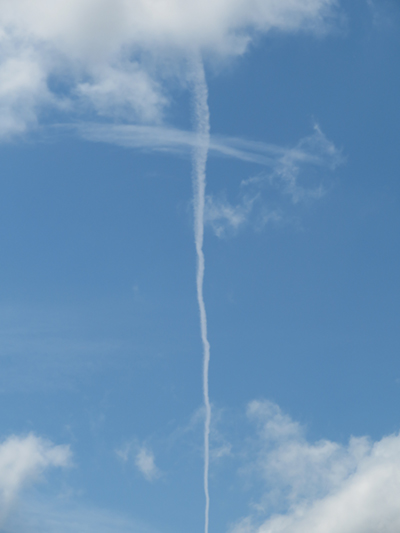

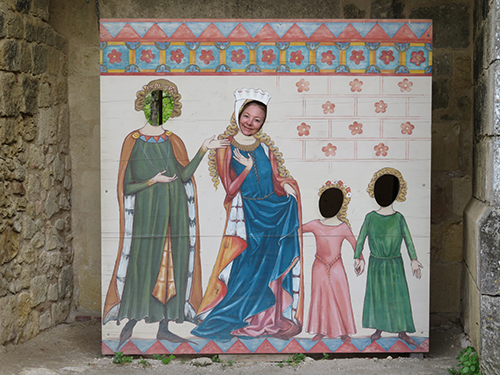

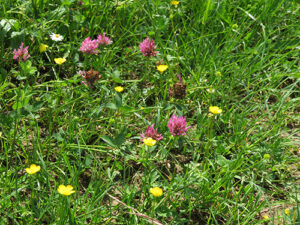
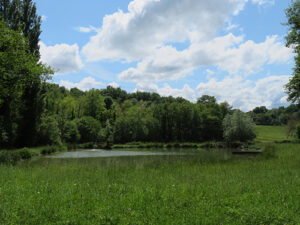
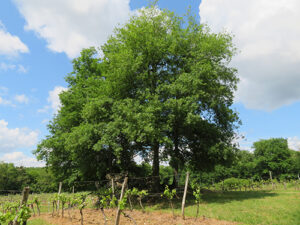
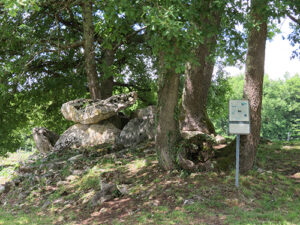

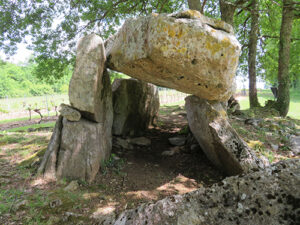
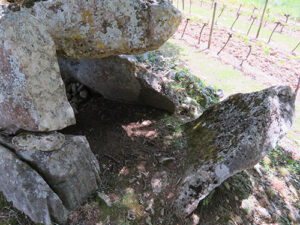
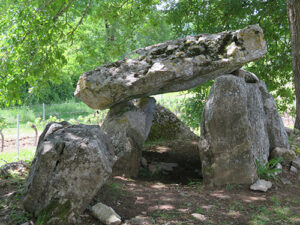

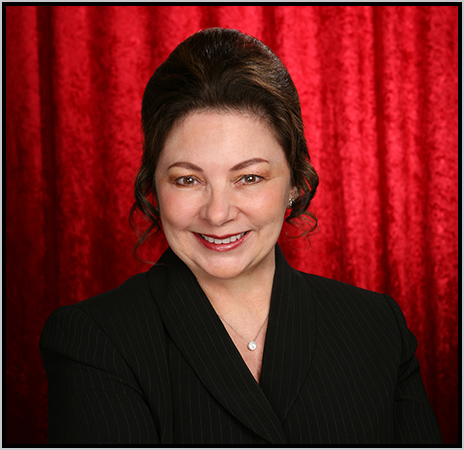 The official website of Lita-Luise Chappell, writer on sex, magic, food, distant lands, and everyday life with articles, poetry, novels, travelogues, rituals, cookbooks, and short-stories.
The official website of Lita-Luise Chappell, writer on sex, magic, food, distant lands, and everyday life with articles, poetry, novels, travelogues, rituals, cookbooks, and short-stories.
